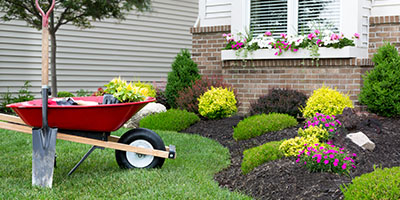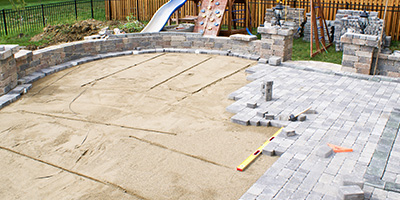When to Cut Down a Tree

How to Tell It’s Time to Cut Down a Tree
Most people have fond memories of a tree. Maybe you climbed one a lot as a kid, or perhaps your treehouse was the old neighborhood hangout. But once that tree dies, it becomes a big safety risk for not only your property, but also your neighbor’s. This guide will help you figure out if your tree is dead, as well as what to do with it if it’s time to cut it down.
Is My Tree Dead?
The simple answer is maybe. It may look like it’s dead, but it could also be dormant. Or maybe only a section of the tree is dead, with just a few branches affected.
Fortunately, there are some telltale symptoms of a dying tree you can look for to get an idea of what may be going on. However, both Tchukki Andersen, staff arborist at Tree Care Industry Association, and Gary Robertson, owner of Yellow Ribbon Tree Experts, note that each genus of tree will show it is dying in different ways. Andersen, a board-certified master arborist and certified treecare safety professional, specifically suggests downloading an app, such as Purdue Tree Doctor or LeafSnap, to help identify what tree you are working with, as well as any symptoms that are specific to that species.
Need to get rid of dirt after cutting down your tree? Check out our Dirt Disposal Guide!
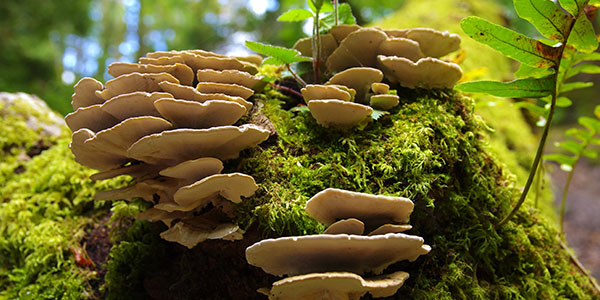
Is there fungus growing near the base of the tree?
Make sure you know what you are looking for. Moss is not an issue — in plenty of cases it is natural. Lichen, which Andersen says is a moss combined with fungi, is an indication that a tree is growing slowly, but not a sign that the tree is dead.
Instead, fungi and mushrooms are what Andersen says you should be on the lookout for, as it is a symptom that your tree is dying.
“The fungi and mushroom will attach to the tree because there is inner decay going on within the tree,” Andersen says. “It’s a sign that the tree is rotting from the inside out, whether that is because of a disease or virus or something.”
Are the roots showing along the ground?
When trees start growing along the surface of the soil rather than into the ground, it can be a sign that the tree is having trouble managing the land. While the tree may not be immediately in danger, a shallow root system will make it more susceptible to harm due to weather, animals and humans — and that harm could lead to the tree needing removal.
A shallow root system could cause a tree to develop a lean, but Pete Smith, urban forestry program manager at Arbor Day Foundation, notes that a leaning tree does not mean it’s time to cut the tree down.
“Trees lean for a variety of reasons at different stages in their life,” Smith says. “A tree may lean because it was planted improperly, or that the soil around it is unstable.”
Is there green underneath the bark?
Sometimes a tree may look like it’s dying, but it could actually be preparing itself for extreme weather. How can you tell if your tree is dead or dormant? The scratch test is usually the easiest way.
“Scratch a little bit off of a tiny branch,” Andersen says. “As you’re scratching, if you see a layer of green tissue underneath, that’s the living cambium layer. It’s what supplies the tree with its food and nutrients and water. That means that the tree is alive.”
If there’s no green layer, it means that the area where you did the test is dead, but does not necessarily mean the entire tree is dead. Repeat the test as needed to determine if your tree is still alive, but if your concerns remain after a few tests, Andersen suggests having a qualified arborist take a look.
Robertson adds that if the bark is falling off, it could indicate something is wrong with the tree: “If the bark is falling off, it means the veins (cambium) have dried out.”
Is the tree showing signs of stress?
Stressed trees will often grow shoots, which are small branches near the base of the trunk. Their presence can indicate something is wrong with the tree.

Pro Tip: When It Comes to Your Trees, Trust Your Gut
“You know your trees best. You’ll be the first one to notice something just doesn’t look right. If you see something looks off, it might be.”
Tchukki Andersen, TCIA
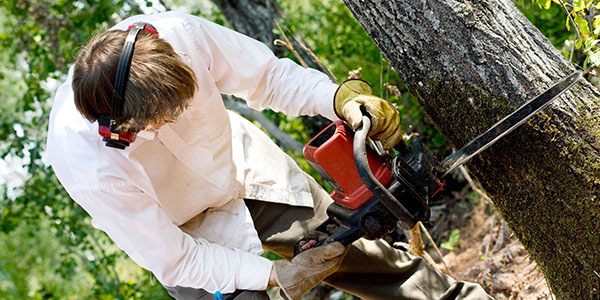
When to Cut Down a Dead Tree
Just because a tree is dying doesn’t mean it needs to be removed right away. A dying tree could take years to fully pass, and can remain sturdy even when sick or damaged. Andersen suggests making sure that a qualified arborist takes a look at any tree you are considering removing to ensure that it is actually dying or dead before removal.
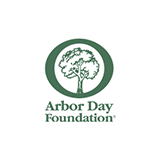
Pro Tip: Hire an Arborist With the Right Credentials
“Always hire an arborist who is certified by the International Society of Arboriculture. Being certified is a sign that they are trained and knowledgeable in all aspects of tree care and committed to proper tree maintenance. When hiring an arborist ask the following: Are they licensed (some states and cities require this)? Can they prove they possess liability insurance and workers compensation insurance?”
Pete Smith, Arbor Day Foundation
Smith suggests using the Find an Arborist tool by Trees Are Good to find someone qualified to give you advice.
However, you still need to decide when a tree has to go, or when it should stay. Robertson offers a few questions to ask yourself as you’re considering when to remove a tree.
Will it damage your home?
If an arborist believes your tree is in danger of falling and it might hit your house, Robertson advises to consider removing it.
“My job is to take care of the residence — the house — but at the same time take care of the tree,” Robertson says.
However, just because a tree is at risk and near a structure does not mean that it is a danger to the building and it may not be time to cut down the tree.
“If I know a tree is still alive and it’s got a bud at the end of the limb, I don’t want to cut it down if I don’t have to,” Robertson says. “If it’s weighted away from the house and maybe only has a few years left, do you need to get rid of it? Maybe not. It’s going to fall away from your house. That’s probably the number one reason I’ll tell someone to leave a tree alone.”
Is the tree structurally sound?
Trees can be hollow without the tree being dead. The question, though, is if the tree can be structurally sound while hollow. Robertson says that a tree that is more than 40-percent hollow could be an issue.
“If there’s more than 40-percent of that meat — and that’s what we call the wood of the tree — gone, it becomes what we call a high-risk,” Robertson says. “It doesn’t mean that it is dead, because it may not be. It means that it could be a high-risk of falling.”

Pro Tip: Learn What Your Tree Needs to Thrive
“Trees talk. You just have to know their language. If you know how a tree works, you can know if something isn’t right.”
Gary Robertson, Yellow Ribbon Tree Experts
An arborist tends to be the best option when it comes to determining how hollow a tree is, particularly in the case of taller trees. It’s easy to see the signs that a tree may be hollow — old wounds, broken branches and pruning cuts may lead to some visible decay, according to Smith — but if you can look into the cavity and not see where it ends, determining how deep the decay runs and if the tree needs to be removed will be nearly impossible without the help of an arborist.
Smith adds that if you are trying to determine how decayed your tree might be, calling an arborist with a Tree Risk Assessment Qualification will help. “A Tree Risk Assessment expert has additional training in tree risks and can best advise on the decay of a tree and what to do about it,” Smith says.
Does the tree really need to be removed?
A tree may be in danger of falling, but that does not mean it is a danger. If the tree is on the back of your property with nothing around, Robertson suggests that it may be best to simply let it fall.
“There’s a ton of reasons why I would suggest to someone not to remove a tree,” Robertson says. “But the number one reason goes back to where is it weighted. If it’s not going to do any damage, why not let it fall? Why pay for someone to take it down when it’s not going to hit anything?”

Important Note on Tree Removal
While removing small trees is manageable, cutting down medium-to-large sized trees is dangerous and could result in serious injuries or death. It is best to hire a professional for larger tree removal.
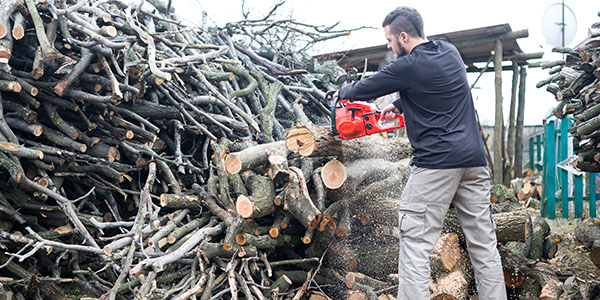
Replacing your old tree with a new one? Check out our guide on How to Plant a Tree!
How to Get Rid of Cut-Down Trees
The decision has been made to remove a tree, and the deed is done. Now you need to figure out what to do with cut-up trees. As with any cleanup, there are plenty of options to dispose of the yard waste:
- Grind the wood into mulch
- Chop it into firewood
- Sell it to a saw mill
- Rent a yard waste dumpster
Check out our yard waste disposal guide for more tips and removal options for your dead tree.
The End of One Tree, the Beginning of Another
Just because the tree is gone does not mean it has to be forgotten. Why not plant a new tree near the site of the old one? That way, as you and your family grow, you can make even more memories in that same shady space.

